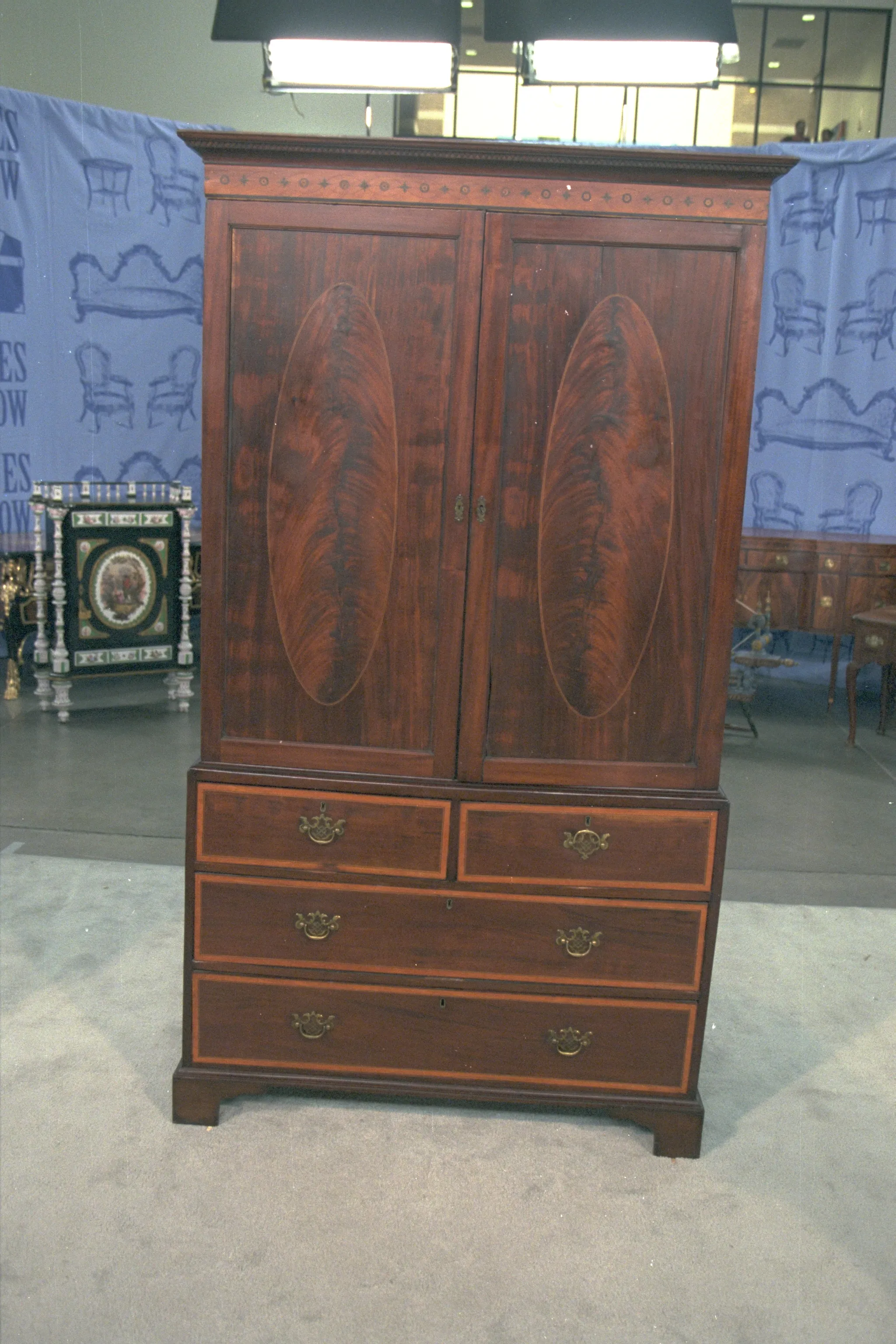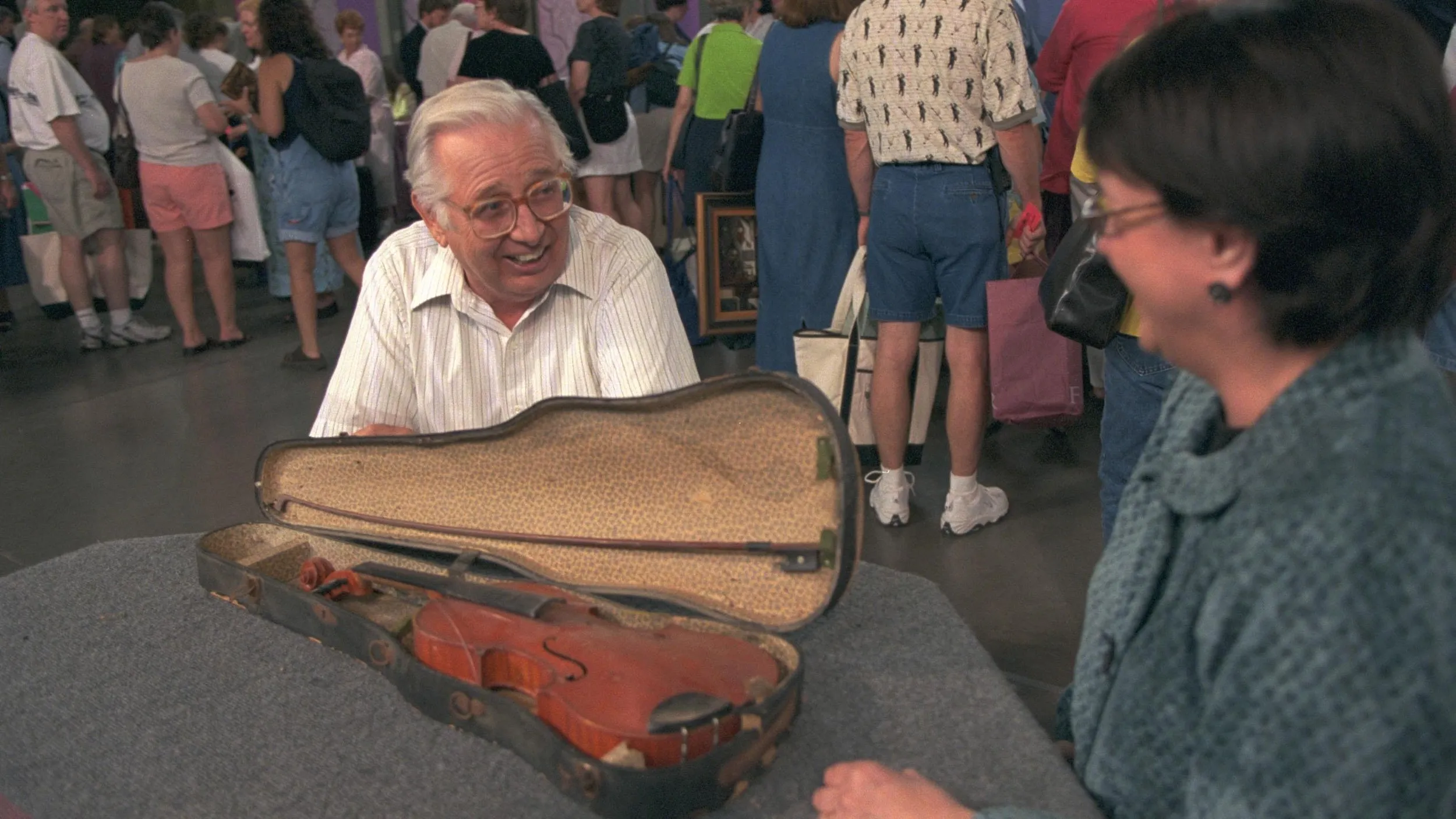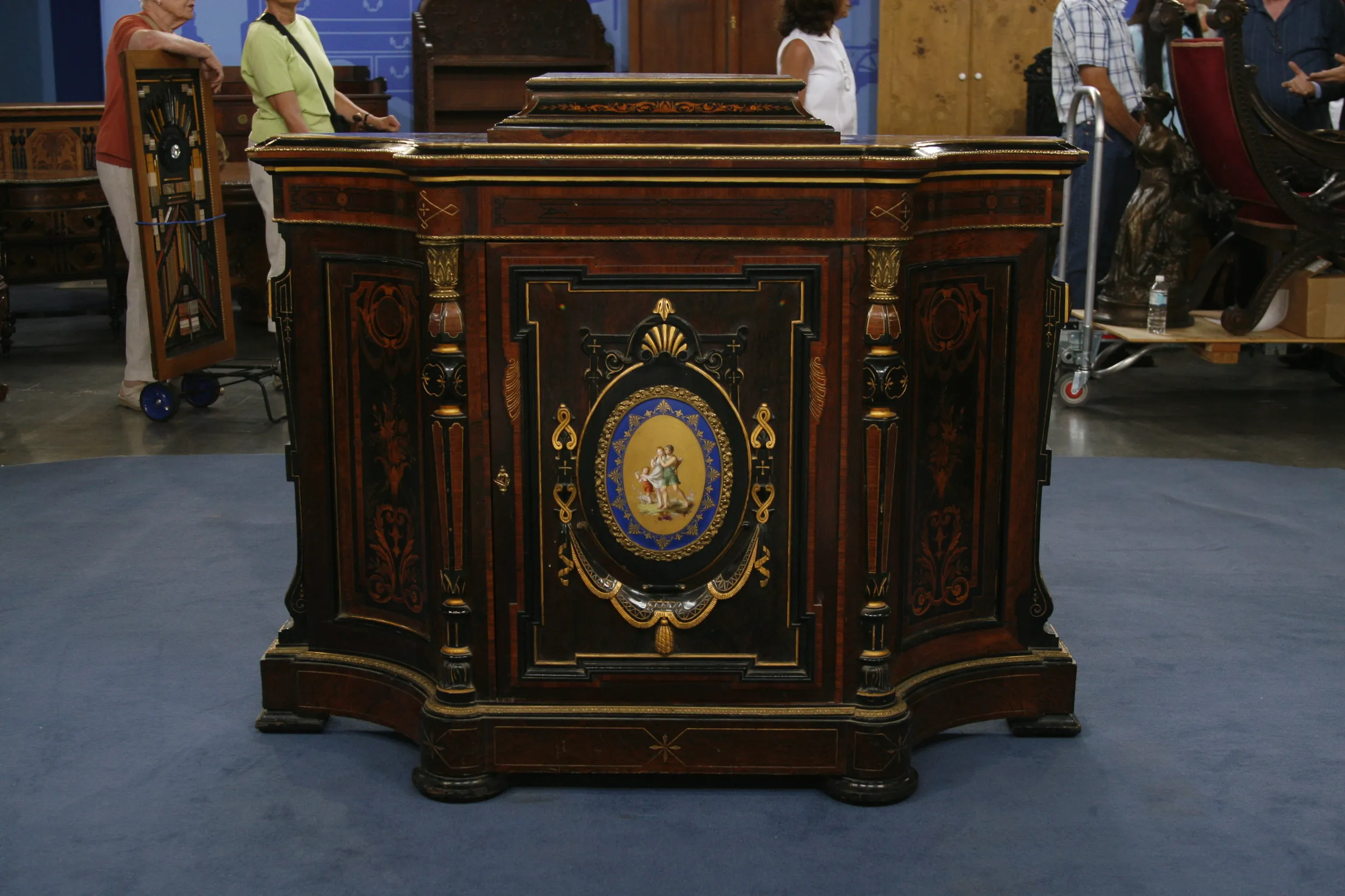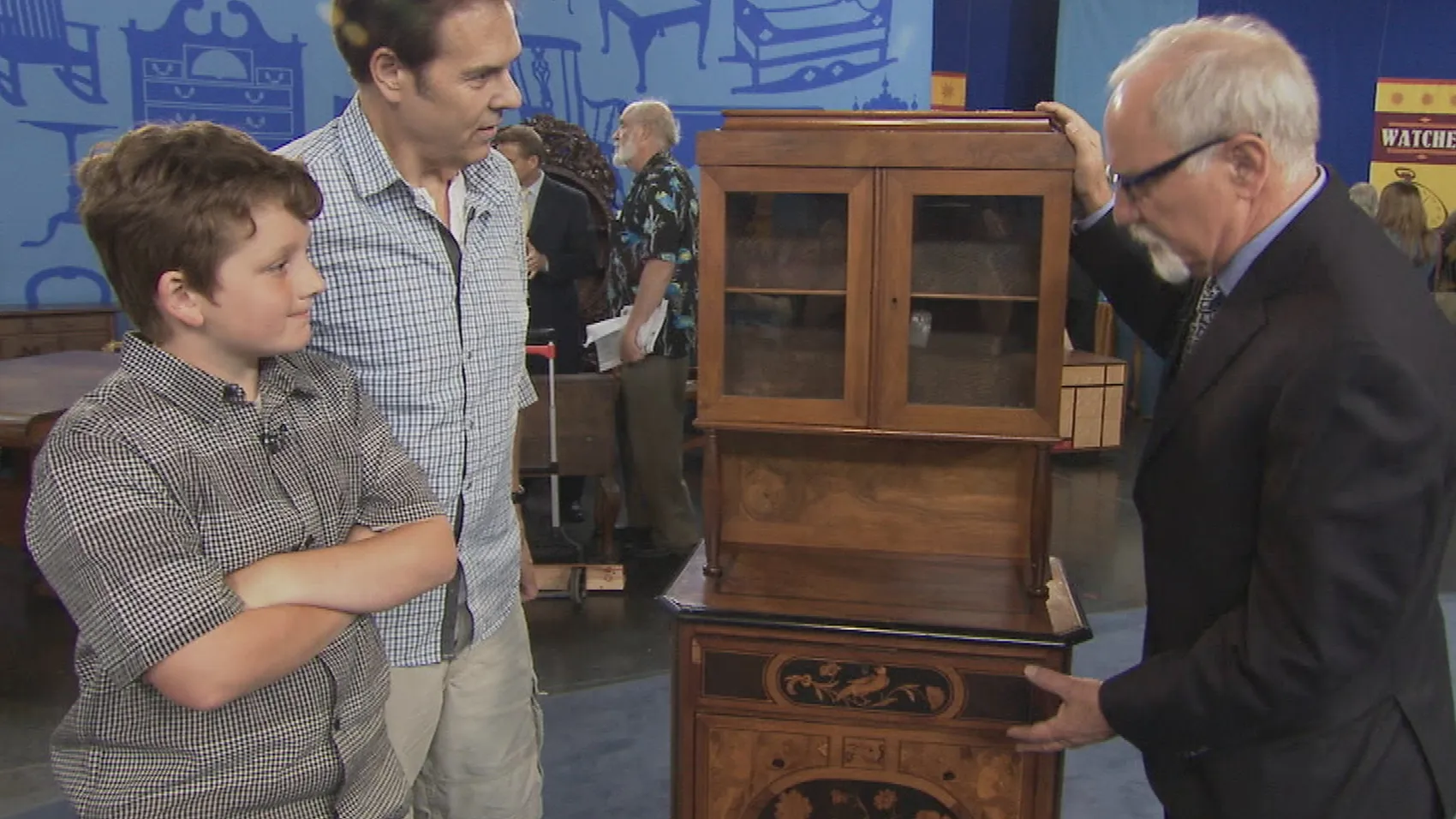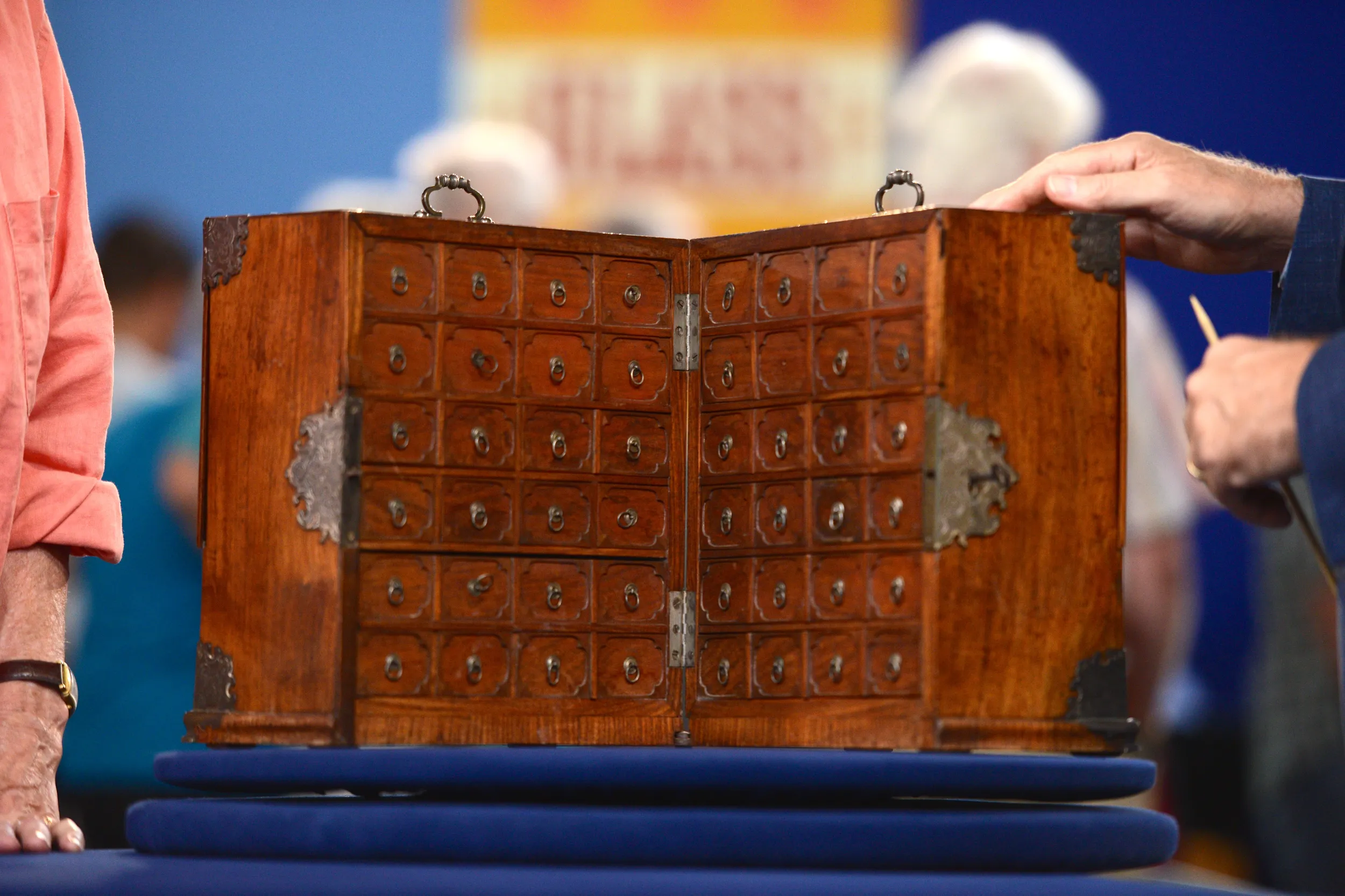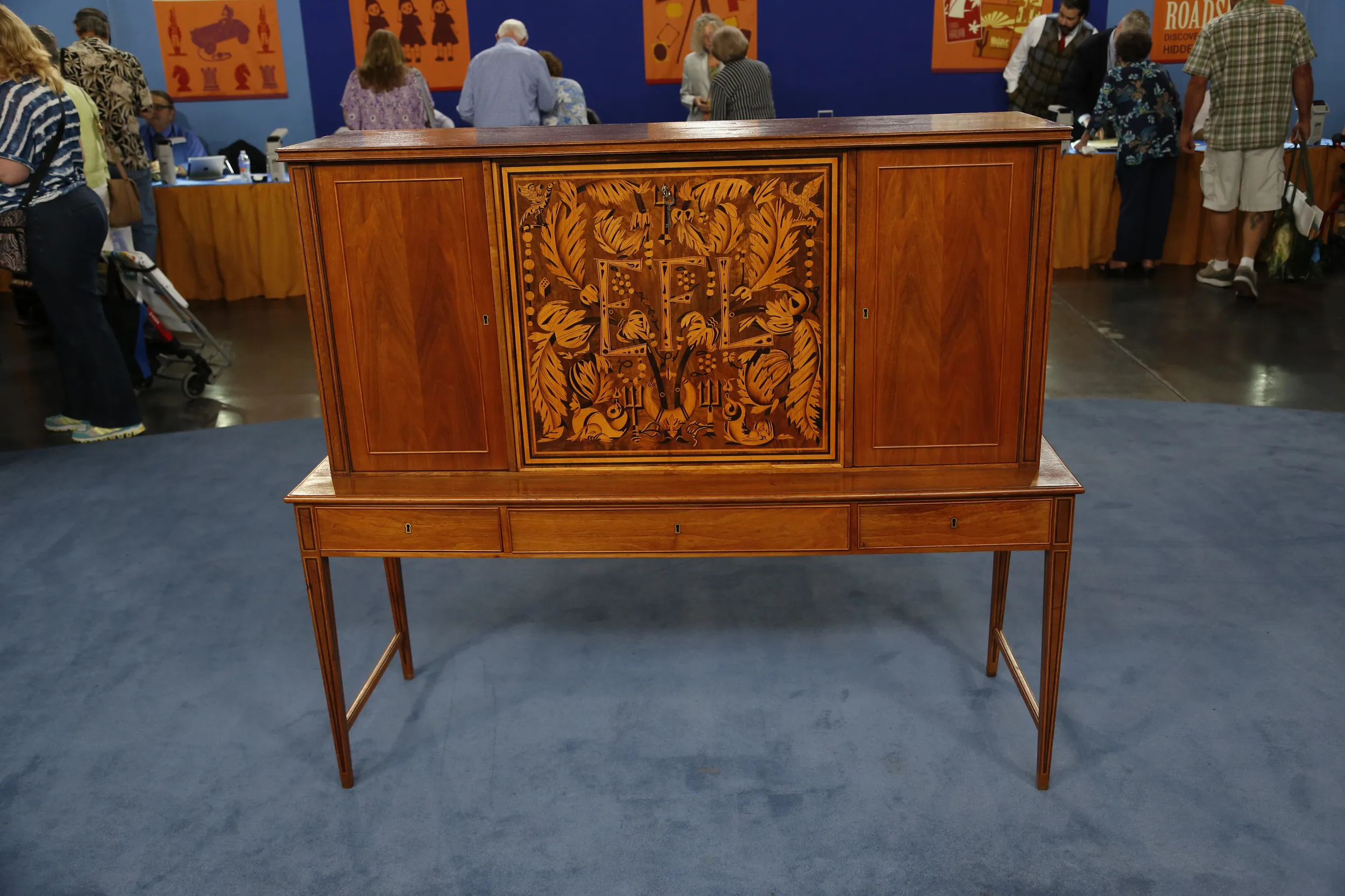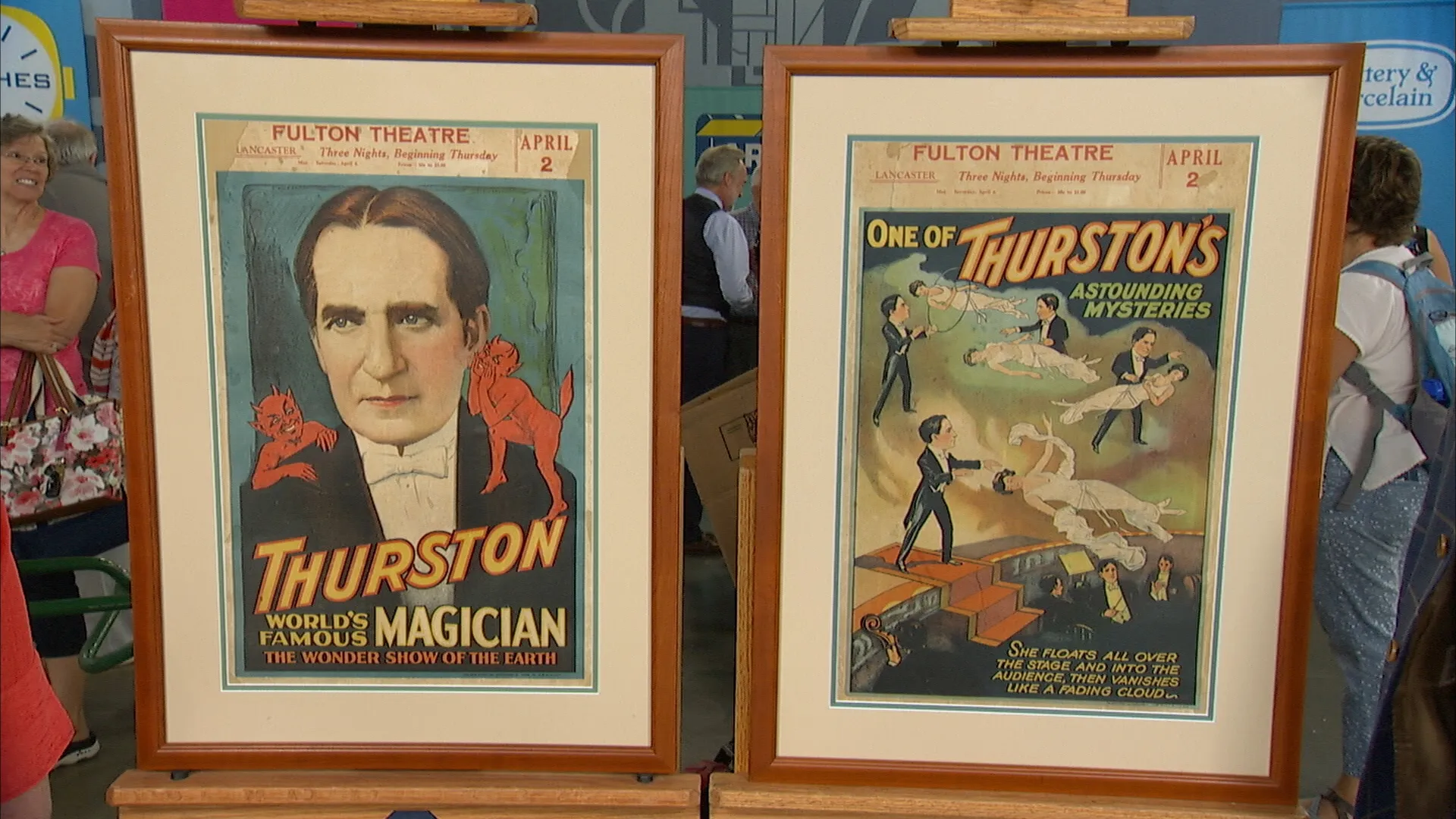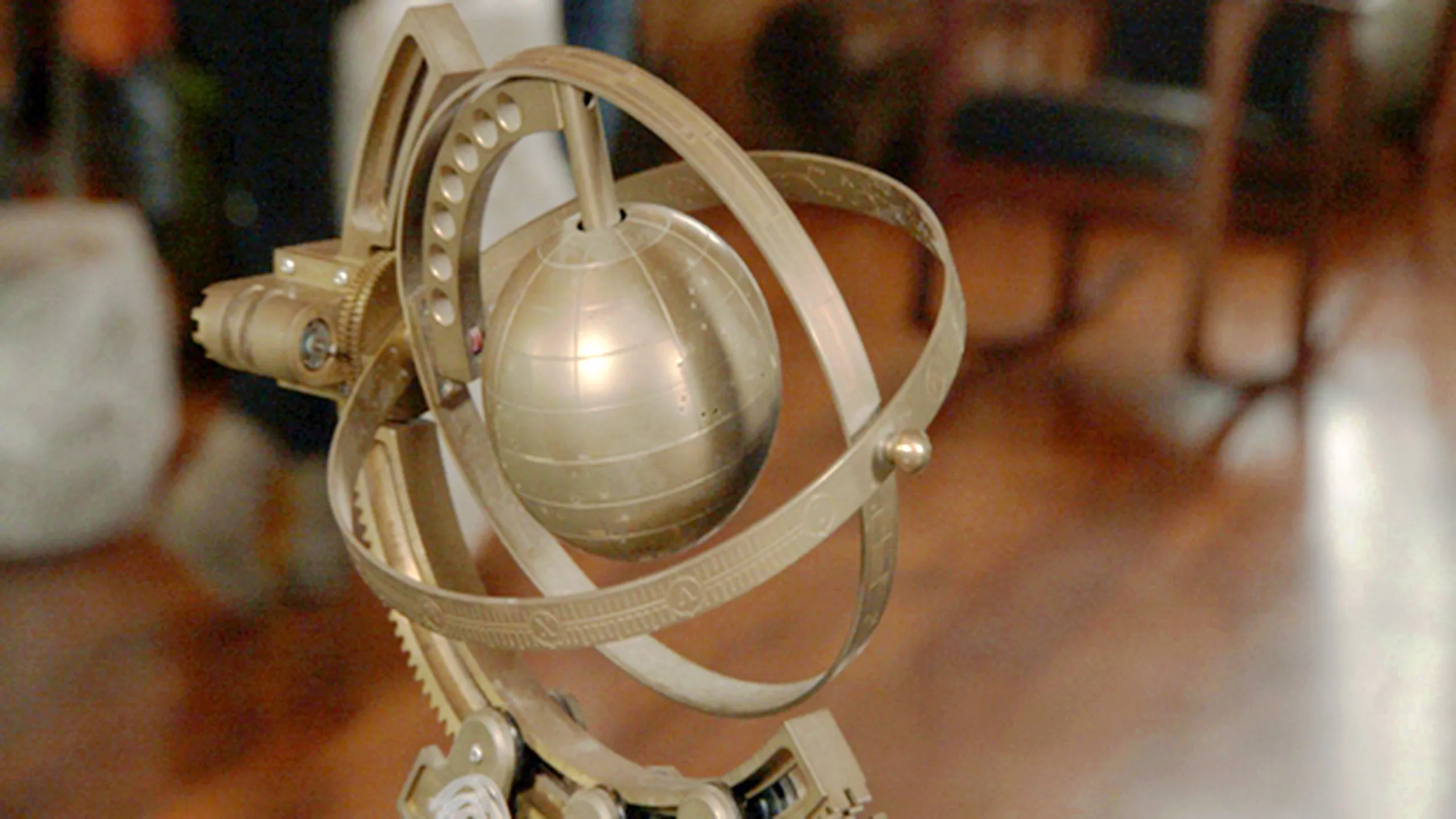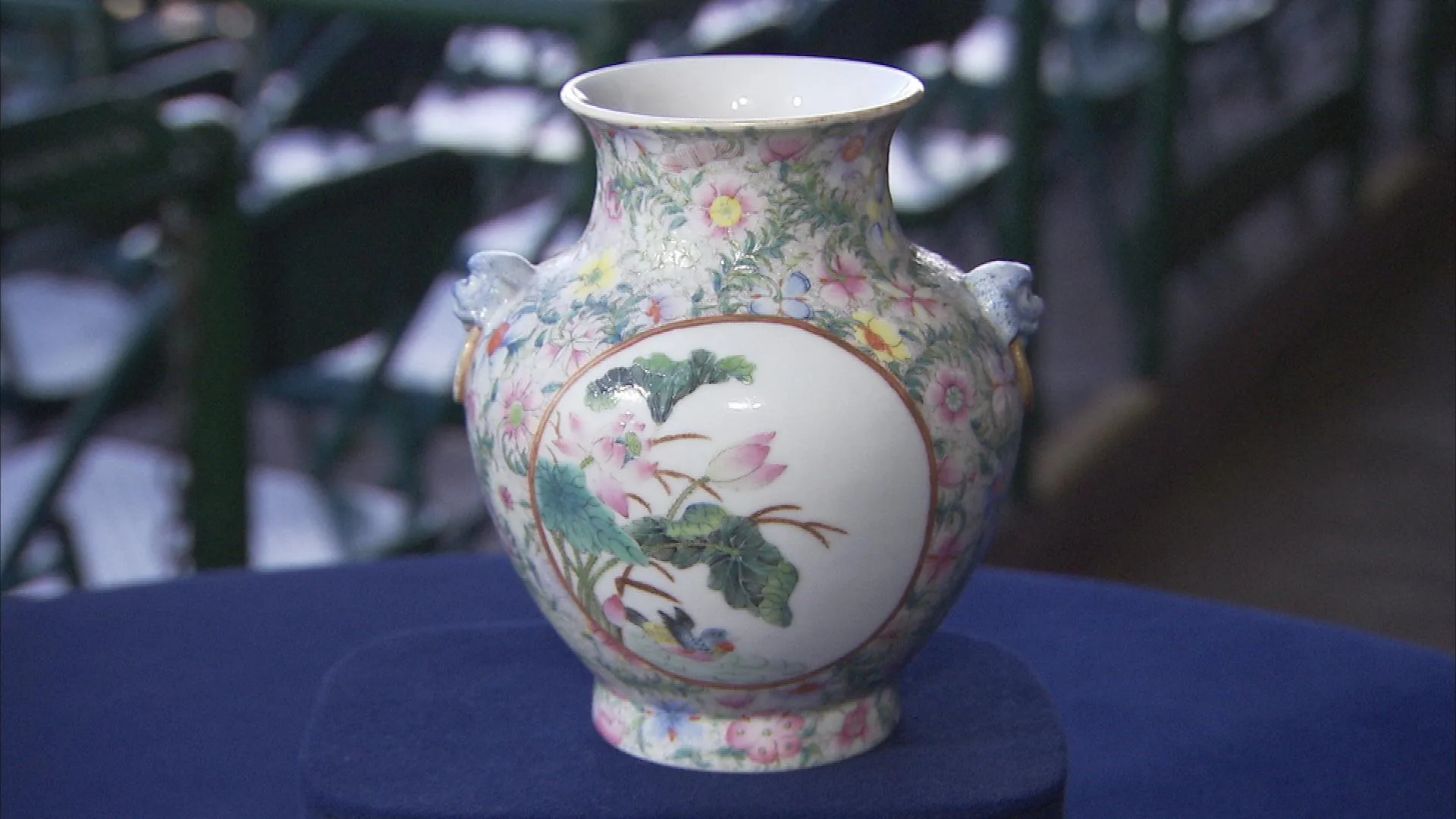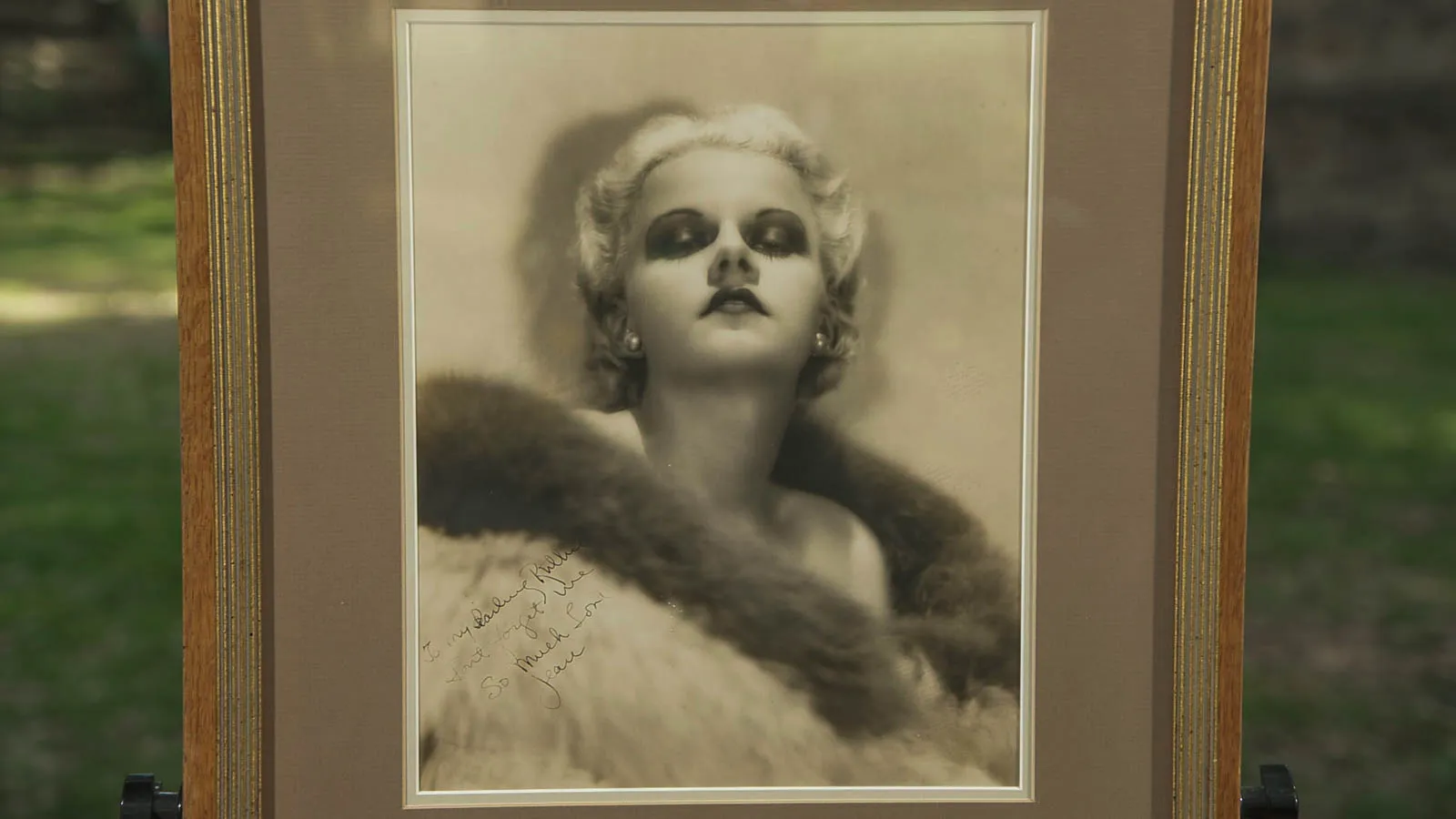APPRAISER: And you brought in this late 18th-century, Georgian, figured mahogany clothes press, or – or linen press. It's a beautiful piece.
GUEST: Thank you.
APPRAISER: I immediately saw it, and I love this explosive panels of wood, these... these panels of wood on the doors. How did you get this piece?
GUEST: This was bought through a friend of mine, and, uh, she was traveling, called me from London…
APPRAISER: Yeah.
GUEST: …told me about this piece, and I gave her the okay to purchase it. And that was done about 30 years ago.
APPRAISER: Okay. Did she pay a lot for it? Do you remember?
GUEST: I don't remember the actual price.
APPRAISER: Okay, okay.
GUEST: Ah… 30 years ago, I probably didn't have...
APPRAISER: Yeah.
GUEST: …as much, so possibly, I would say it was probably $1,000…
APPRAISER: Okay.
GUEST: …or under.
APPRAISER: Under $1,000, okay, that's not bad.
GUEST: I'm not sure.
APPRAISER: Well, these are called clothes presses.
GUEST: Right.
APPRAISER: Or linen presses, but - but they're really to hold valuable linens and clothing-- trousers, blouses-- in the 18th century. And one of the things that's very important, when we look at a piece like this, is trying to understand why it's English or why it's American. It's an important question because… it could be much more valuable if it is American, so, we really want to look closely. The first thing I see is this satinwood frieze across the top. You rarely see that in America. You rarely see this sort of inlay in satinwood on the top. Also, the crossbanded drawers that we see on the front here, you see sometimes in Charleston. You see it on Southern furniture, or you see it on English furniture. But you sort of have to add up all these different things to sort of figure it out. It's only when we look inside… is when we really start to get to the bottom of it. What we have here is very thin drawer sides, which are more typical of English construction during the Georgian period. Also, the drawer sides are made of oak… English oak, not an American oak. These dovetails are typical English dovetails, which are very short, very thin. In America, they might be fatter. And here, you have spruce, which is an English conifer. And so all those point towards – towards England. We open up these doors... if you want to look inside. This is where they stored... you have these pull-out open shelves to store clothing and things-- wonderful. But the important point here is to look in the back, and you see that brace that runs vertically in the back. That's a very English construction characteristic. You really won't see that in America much-- sometimes in the South, but rarely. Also, there's a couple wormholes. Usually, worms exist more in English furniture than American, so that's a little bit of a… a red warning light when that goes off…
GUEST: Right.
APPRAISER: …and, ah… well, you said you'd paid under $1,000, you thought, for it.
GUEST: I think so.
APPRAISER: Yeah, yeah. As an English piece, this is probably-- because it has its old finish, its beautiful patina, the proportions, the design is wonderful, I love the crossbanding, it's in great condition-- the value's probably in the area of, sort of, $12,000 to $18,000.
GUEST: Wow.
APPRAISER: So that's a good…
GUEST: Yeah.
APPRAISER: Good increase.
GUEST: Great investment.
APPRAISER: Now, if this were American, which is why all those points we talked about are so important, it would be worth about three times that. Given the condition, given the elaborate... how elaborate this particular piece is it would probably be more in the... you know, $35,000…
GUEST: Yeah.
APPRAISER: …range.
GUEST: Got you.
APPRAISER: I'm glad you came in today. Really glad.
GUEST: I appreciate it, nice meeting you.
APPRAISER: Thank you, nice to meet you.

